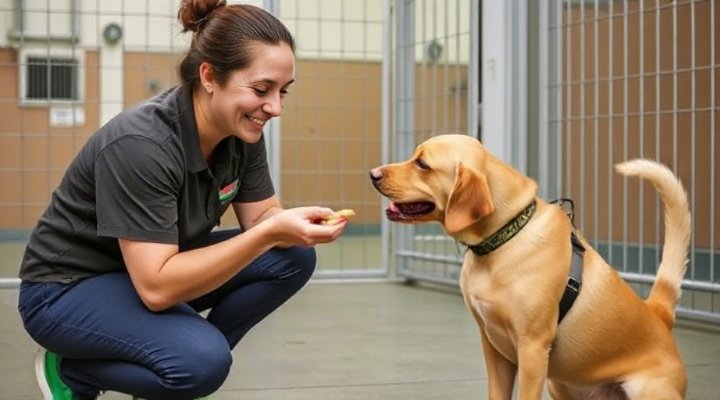Finding the right dog boarding for reactive dogs can be a daunting task, but it’s essential for ensuring your pet’s safety and well-being. Reactive dogs often struggle with anxiety, fear, or aggression, making it crucial to choose a facility that understands their unique needs. In this guide, we’ll walk you through the process of selecting the best boarding option and preparing your dog for a stress-free stay.

Understanding Reactive Dogs and Their Needs
Reactive dogs exhibit behaviors like barking, lunging, or growling in response to specific triggers, such as other dogs or strangers. Therefore, it’s vital to find a boarding facility that specializes in handling such behaviors. For example, some facilities offer private suites or individualized care to minimize stress.
Moreover, reactive dogs often thrive in environments with minimal distractions and a consistent routine. As a result, look for boarding services that provide structured schedules and trained staff who can manage reactive behaviors effectively.

How to Choose the Right Boarding Facility
When selecting a dog boarding for reactive dogs, consider the following factors:
- Staff Training: Ensure the staff is trained in handling reactive dogs and understands canine body language.
- Environment: Look for facilities with quiet, low-stress environments and private spaces.
- Reviews: Check reviews from other pet owners with reactive dogs to gauge the facility’s suitability.
Additionally, visit the facility beforehand to observe the environment and ask questions about their protocols for reactive dogs. For instance, you might want to know how they handle emergencies or what their daily routine looks like.

Preparing Your Reactive Dog for Boarding
Preparation is key to ensuring a smooth boarding experience for your reactive dog. Here are some steps to follow:
- Visit the Facility: Take your dog for a short visit to familiarize them with the environment.
- Pack Familiar Items: Bring your dog’s favorite toys, bedding, and treats to provide comfort.
- Provide Detailed Instructions: Share your dog’s triggers and coping mechanisms with the staff.
Furthermore, consider a trial stay before a longer boarding period to see how your dog adjusts. This can help identify any potential issues and allow the staff to tailor their approach.

Alternatives to Traditional Boarding
If traditional boarding isn’t the right fit for your reactive dog, explore alternatives like in-home pet sitting or specialized dog training programs. These options often provide a more personalized and less stressful experience.
For more information on managing reactive dogs, check out this resource from the AVMA.
Final Thoughts
Choosing the right dog boarding for reactive dogs requires careful consideration and preparation. By selecting a facility that understands your dog’s needs and taking steps to prepare them, you can ensure a safe and comfortable stay. Remember, your dog’s well-being is the top priority.
For more tips on dog training, visit our guide on managing dog aggression.
